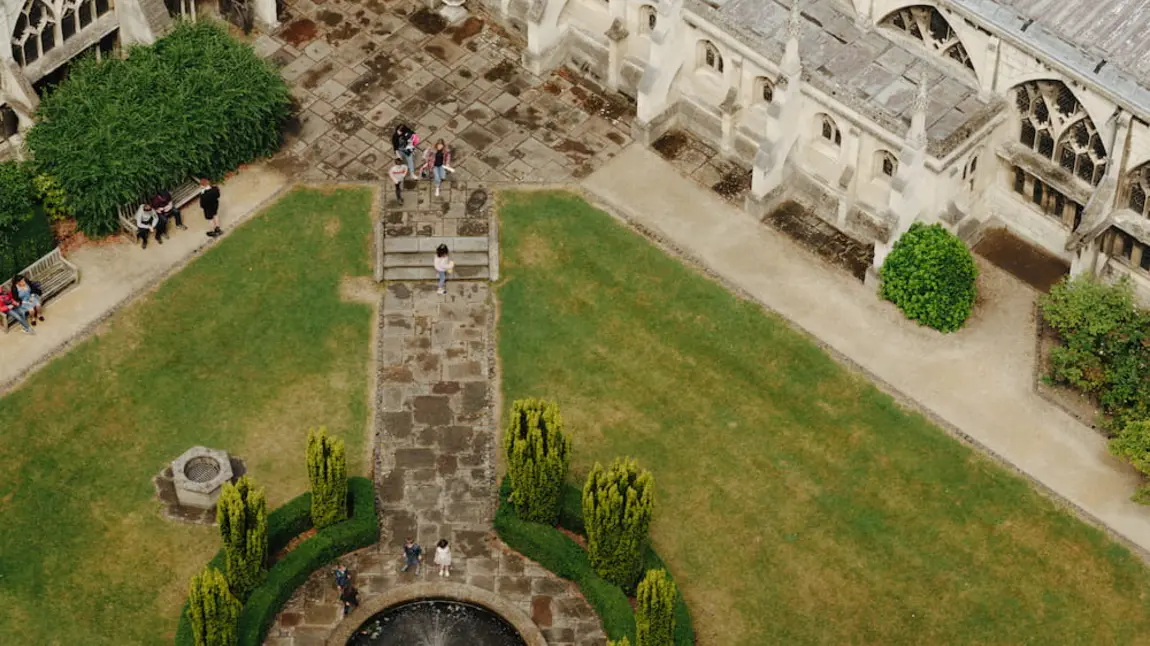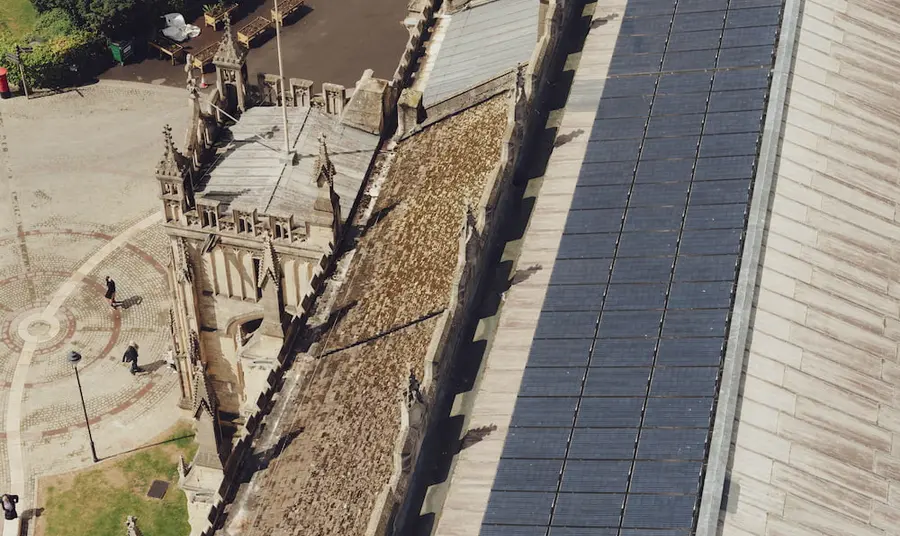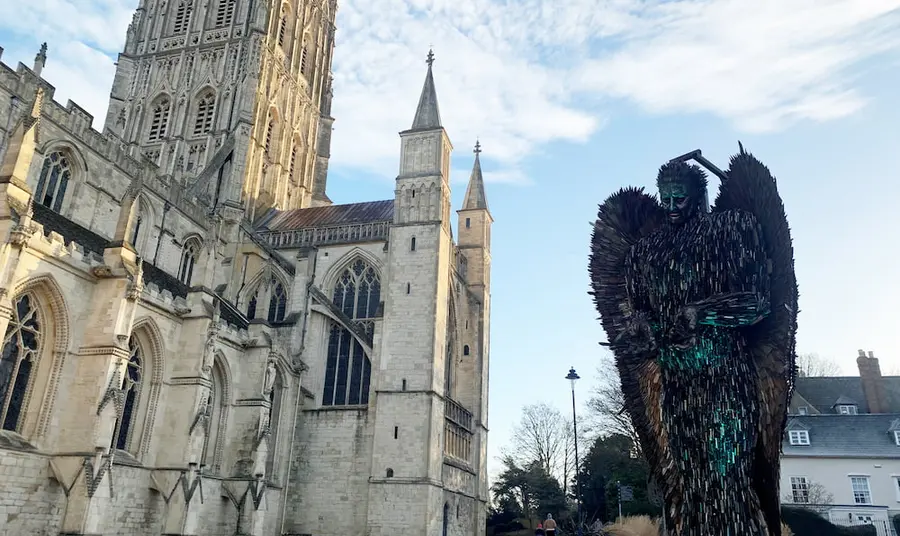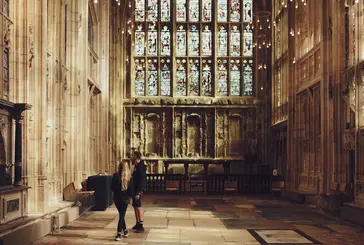
Heritage Grants
The project
Said to be a place where challenging issues can be considered, phase one of Project Pilgrim aimed to position Gloucester Cathedral as a world class destination.
The project installed 150 solar panels on the nave roof and transformed the car park into a public green space.
The 15th century Lady Chapel, which was classified as 'at risk' by Historic England, was rejuvenated. The project also increased accessibility throughout the building, meaning visitors could engage with its heritage like never before.
The organisation
The Grade I listed cathedral is one of the city’s most iconic heritage buildings and a major tourist destination.
Worship began on the site in 679 and parts of the current building date back to 1089. The cathedral is important to the local economy, attracting thousands of visitors each year.
The funding
The project received nearly £4.5million from the Heritage Fund. Almost £100,000 was also raised by the local community who sponsored the solar panels.
Making sustainable statements
Installing solar technology at a heritage site was a challenge. The team worked hard to make sure they did not disturb the look of the ancient cathedral, which included the architect standing on many tall buildings to view the site at different angles.
Reflecting on this part of the project, Anne Cranston, Former Head of Projects notes that it was an important statement to make for the future: “Perceptions have changed since we installed solar panels. Many people look to the church to take a lead on the climate emergency and places of worship are now being encouraged to include solar panels and to make them visible.
“The argument now is that they are not a temporary intervention but a critical one. Without a dramatic shift to renewable energy sources, the future of the building itself is at risk thanks to climate change.”
Since they were installed in 2016, the panels have saved over 41,000kg in Co2 emissions, which is the equivalent of planting more than 2,500 trees. They now generate over 25% of the cathedral’s electricity while the rest is achieved by green energy.
Thriving public green space
Turning the car park into a green space benefitted the wider community as it increased the city’s limited number of public outdoor areas.
As well as leisure activities such as walks and picnics, the space is used for public events and performances. In February 2023, it hosted the touring Knife Angel sculpture which attracted 120,000 people in the two weeks that it was on display.
Theo Platt, Chief Operating Officer recognises that entering a historic building like a cathedral can feel “intimidating”. He says:
“We wanted to create a safe green space which will welcome people to engage with heritage. I’m so proud of this part of the project because it has given something to the city.”
Improving accessibility
for the first time ever. Credit Gloucester Cathedral.
The main entrance was brightened with new glass walls and made wider for wheelchair users and mobility scooters. A pillar that restricted access to the Lady Chapel was also removed.
The stained glass window was conserved and the restoration offered the opportunity for four new apprentice stonemasons to be recruited and trained. A new sound system, heating and lighting were installed, enabling the space to be used for cultural events.
In-person tours used to be the only way to learn about the cathedral’s history. An app was developed with our funding which allows visitors to read or listen to the interpretation at their own pace.
Meeting our outcomes
Environmental sustainability was at the core of this project. Gloucester Cathedral has received an Eco Church Bronze Award and Green Tourism Silver Award and is committed to supporting the Church of England to achieve its net zero carbon goal by 2030.
The transformed space inside and out has enabled and encouraged a wider range of people to engage with the heritage.
The green space has provided a hub for a volunteer-led gardening group which supports vulnerable people, including those with learning disabilities and those who have experienced trauma.
The future
Phase two of Project Pilgrim was paused due to the impact of the coronavirus (COVID-19) pandemic. The team are now looking forward to making a start on this new chapter which involves working with partners to further engage Gloucester’s diverse communities.
Their ambition is to become a centre for learning and excellence. Every year, up to three new stonemason apprentices will be recruited to do a foundation degree. This will create a pipeline of skilled craftspeople who can go on to support the wider heritage sector.
Top tips
The team at Gloucester Cathedral shared tips for similar projects:
- Involve the community through discussions and workshops and listen to their suggestions for the project.
- Be prepared to be flexible if intending to install solar panels on a heritage site. Planning is very important to make sure the technology will be appropriate on-site.
- Make interventions that work for the space. Due to their old age, making heritage sites accessible often isn’t straightforward. Some things may not be possible so use this chance to be innovative.
- Conservation is about managing change, not about preserving things exactly as they are. You can care for the site’s heritage while still implementing modern projects.




